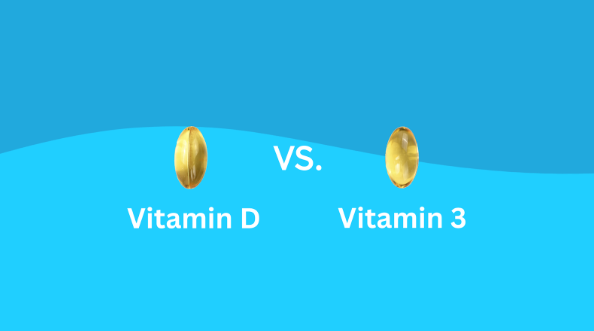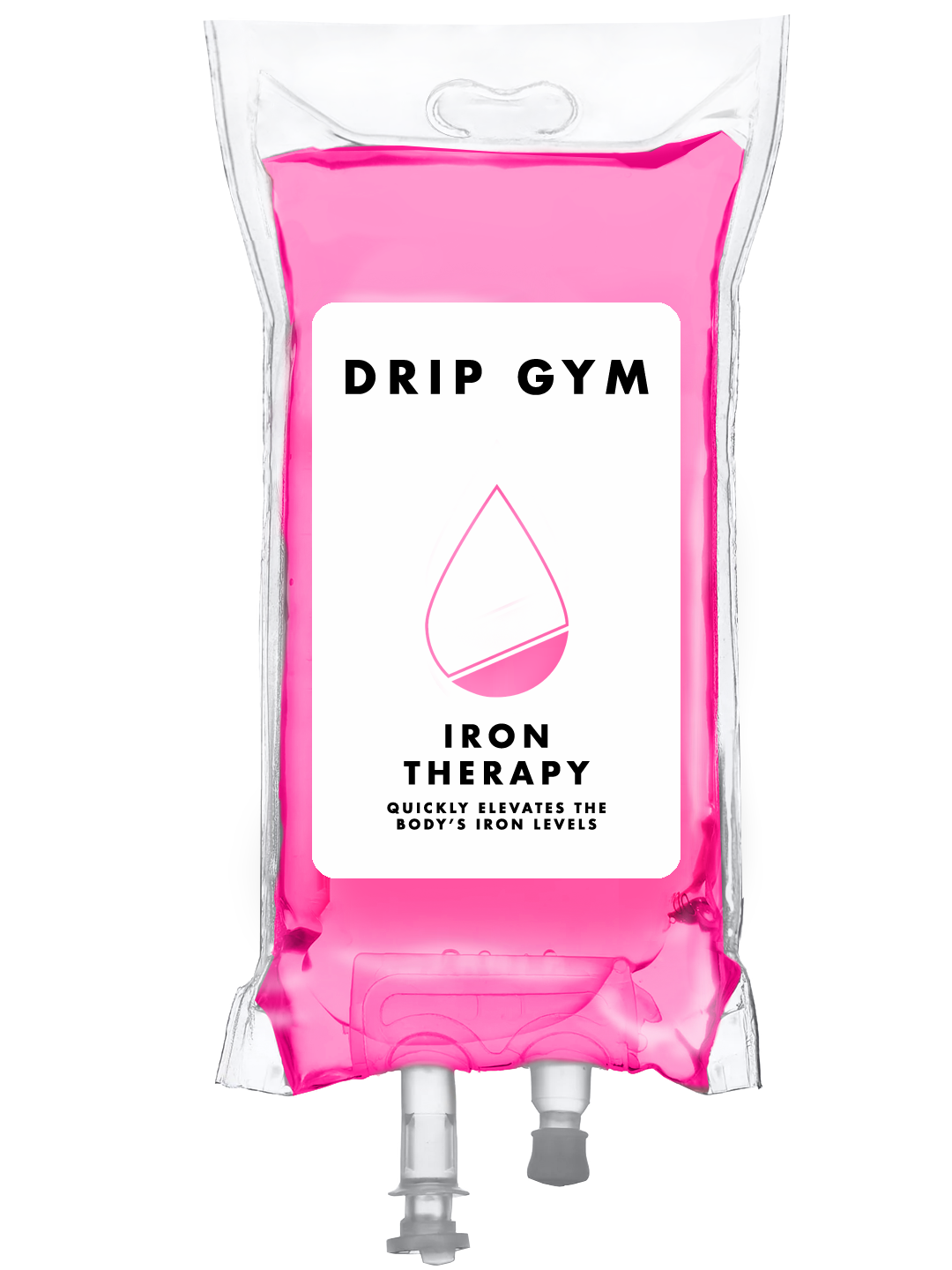Major Differences Between Vitamin D and Vitamin D3

Vitamin D is an essential nutrient that plays a key role in supporting bone health, boosting the immune system, and regulating calcium and phosphorus levels in the body. While vitamin D is a general term, it refers to a group of fat-soluble compounds, including vitamin D2 and vitamin D3.
But is vitamin D and D3 the same? Understanding the difference is important to making informed decisions about your health and supplementation.
In this article, we'll explore the differences between vitamin D and vitamin D3 to help you understand their unique roles and how they impact your health.
What is vitamin D?
Vitamin D is a fat-soluble vitamin vital for various body functions, primarily maintaining bone health. It helps absorb calcium and phosphorus, which are crucial for strong bones and teeth. Beyond bone health, vitamin D plays an important role in supporting the immune system, reducing inflammation, and promoting cell growth.
There are two main forms of vitamin D: vitamin D2 and vitamin D3. The body naturally produces vitamin D3 when your skin is exposed to sunlight, while vitamin D2 is mostly obtained from plant-based foods and fortified products. Both forms are beneficial, but they differ in their sources and how efficiently they work in the body.
When discussing vitamin D, people often wonder, Is vitamin D and D3 the same? While both types of vitamin D support essential bodily functions, they have important distinctions that are worth understanding for optimal health management.
Where do we get vitamin D?
There are three primary sources of vitamin D: sunlight, food, and supplements. Each plays a key role in maintaining adequate levels of this essential nutrient.
Sunlight
The most natural way to get vitamin D is through direct exposure to sunlight. When UVB rays hit your skin, they trigger the production of vitamin D3. This is why vitamin D is often referred to as the sunshine vitamin. However, factors like limited sun exposure, geographical location, skin tone, and the use of sunscreen can affect how much vitamin D your body produces.
Food Sources
Vitamin D is found in a limited number of foods. Fatty fish like salmon, mackerel, and tuna are some of the best natural sources of vitamin D3. Other animal products, such as egg yolks and liver, also contain vitamin D3.
On the other hand, plant-based sources typically provide vitamin D2, which is found in mushrooms exposed to sunlight and fortified foods like cereals, orange juice, and plant-based milk.
Supplements
For those who struggle to get enough vitamin D from sunlight and food, supplements are an easy and effective way to ensure adequate intake. Vitamin D supplements are available in two forms: vitamin D2 and vitamin D3. However, vitamin D3 is more effective at raising and maintaining vitamin D levels in the bloodstream, which is why it's commonly recommended over vitamin D2.
Is vitamin D3 the Same as vitamin D?
Although people often use the terms vitamin D and vitamin D3 interchangeably, they are not exactly the same. vitamin D is a broad term used to describe a group of fat-soluble compounds essential for maintaining bone health, supporting the immune system, and regulating calcium levels in the body.
The two most important forms of vitamin D are vitamin D2 (ergocalciferol) and vitamin D3 (cholecalciferol).
Vitamin D3 is the form naturally produced in your skin when exposed to sunlight and is also found in animal-based foods. It is considered more effective at increasing and maintaining vitamin D levels in the body compared to vitamin D2, which is found in plant-based sources like mushrooms and fortified foods.
So, is vitamin D and D3 the same? Technically, no. Vitamin D3 is just one form of vitamin D, but it’s the most effective form when it comes to supplementation and maintaining optimal levels in the body.
What's the Difference Between vitamin D and vitamin D3?
While vitamin D is often used as an umbrella term, vitamin D3 is a specific form of vitamin D that offers unique benefits.
Let's explore some major differences between vitamin D and D3:
Chemical Structure
The most basic difference between vitamin D and vitamin D3 lies in their chemical structure. vitamin D refers to both vitamin D2 (ergocalciferol) and vitamin D3 (cholecalciferol). These compounds are similar but differ slightly in their molecular makeup.
Vitamin D3, produced by the skin from sunlight and found in animal-based sources, is structurally closer to the vitamin D naturally produced by the human body. Vitamin D2, on the other hand, is derived from plant sources and has a slightly different structure.
Sources of vitamin D vs. vitamin D3
Vitamin D is available in two main forms: vitamin D2 and vitamin D3. Vitamin D3 is found in animal-based foods like fatty fish, egg yolks, and liver, as well as supplements. Vitamin D2 is found in plant-based sources, such as mushrooms exposed to sunlight and fortified foods like cereal and non-dairy milk.
How Each Is Processed in the Body
Vitamin D2 and vitamin D3 are processed differently once they enter the body. After being absorbed, both forms are converted in the liver into calcifediol, the storage form of vitamin D. However, research shows that vitamin D3 is more efficiently converted and remains in the body for a longer duration than vitamin D2. This makes vitamin D3 the preferred form for maintaining long-term vitamin D levels.
Absorption and Effectiveness
When it comes to absorption, vitamin D3 is more efficient than vitamin D2. Vitamin D3 is better absorbed into the bloodstream and allows it to raise and maintain vitamin D levels more effectively than vitamin D2.
This is why many doctors and health professionals recommend vitamin D3 for supplementation, especially for those looking to maintain optimal vitamin D levels over the long term. The body recognizes vitamin D3 more easily, making it more bioavailable than vitamin D2.
Health Benefits of vitamin D vs vitamin D3
Both vitamin D and vitamin D3 play great roles in maintaining bone health, supporting immune function, and regulating calcium and phosphorus levels in the body. However, vitamin D3 is generally considered more effective at delivering these benefits.
Vitamin D3 raises blood levels of vitamin D more significantly than vitamin D2, making it a better option for long-term health. Vitamin D3 is especially important for supporting bone density, immune health, and overall well-being.
Recommended Forms for Supplementation
For most people, vitamin D3 is the recommended form of supplementation. Whether you are looking to increase your vitamin D intake through food, sunlight, or supplements, vitamin D3 is more easily absorbed and better utilized by the body. It is available in both oral and injectable forms.
Those with vitamin D deficiencies, limited sun exposure, or other specific health conditions may need to prioritize vitamin D3 for its superior absorption and effectiveness.
Effectiveness of vitamin D Shots vs Oral Supplements
When comparing vitamin D shots to oral supplements, vitamin D shots offer a faster, more direct method of delivering the nutrient to your bloodstream. While oral supplements are effective, they must pass through the digestive system, which can slow down absorption, especially in people with digestive issues.
This makes vitamin D shots a great option for people who need an immediate boost in their vitamin D levels or who have difficulty absorbing nutrients through digestion.
Boost Your Immunity with Drip Gym’s vitamin D Shot
Enhance your health with vitamin D shots from Drip Gym. Known as Sunshine in a syringe, our vitamin D shot is priced at just $60 per session. This fast-absorbing shot strengthens your immune system, supports bone health, improves mood, and promotes overall well-being.
Whether you visit our clinic or receive your injection at home, our expert team will help you boost your immunity and feel your best. Book your appointment through our website or by calling 516-445-7191.




